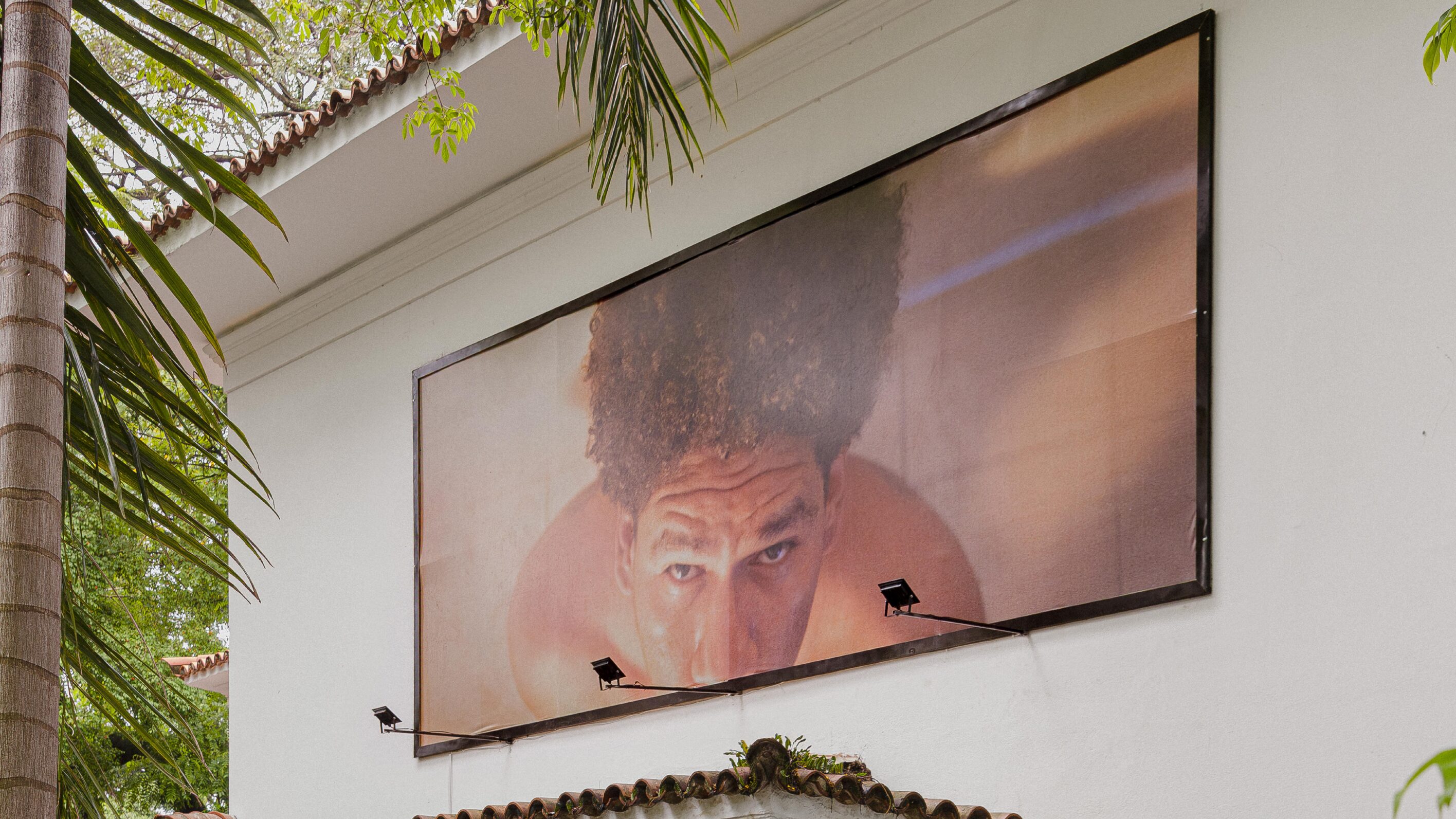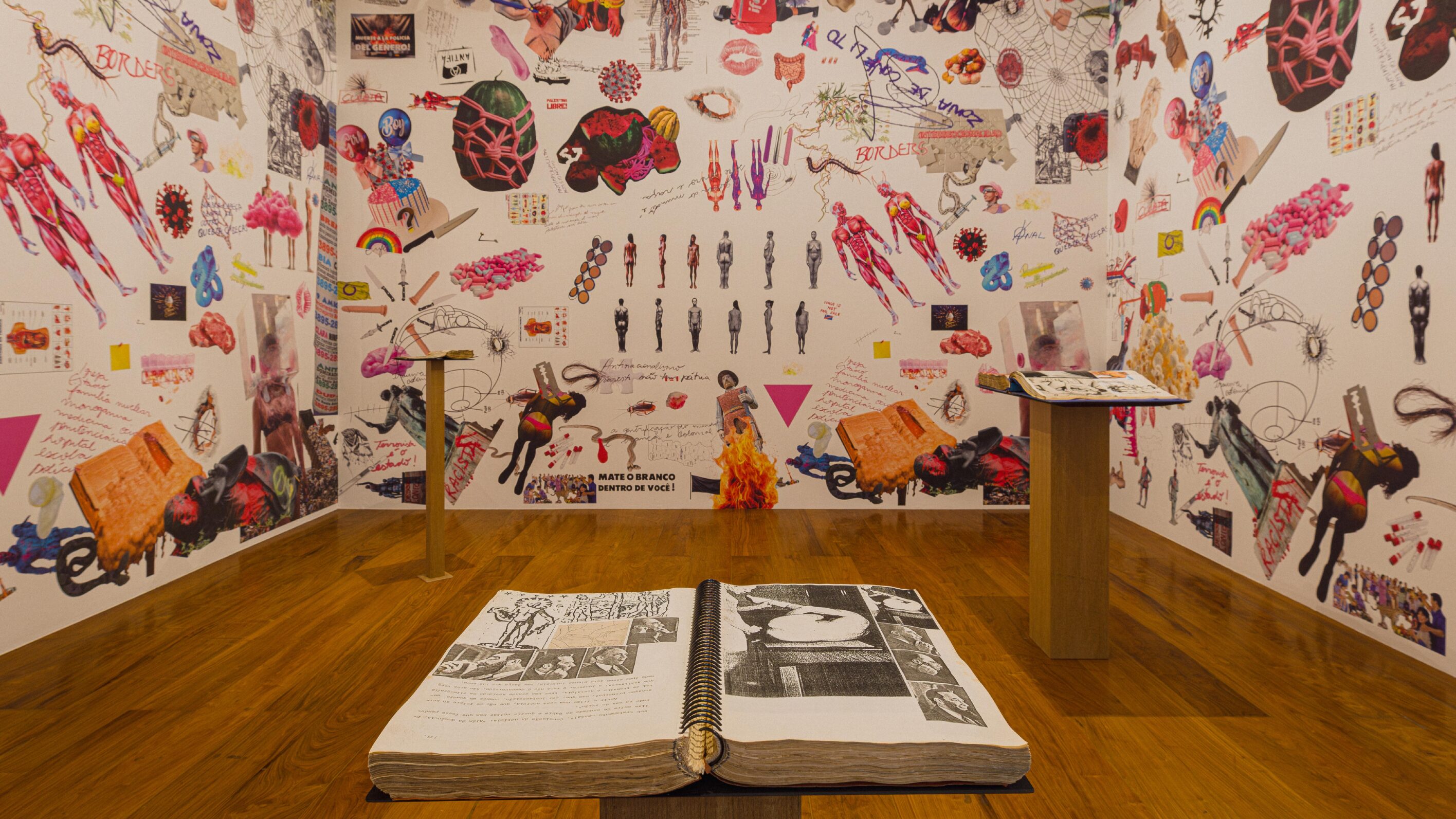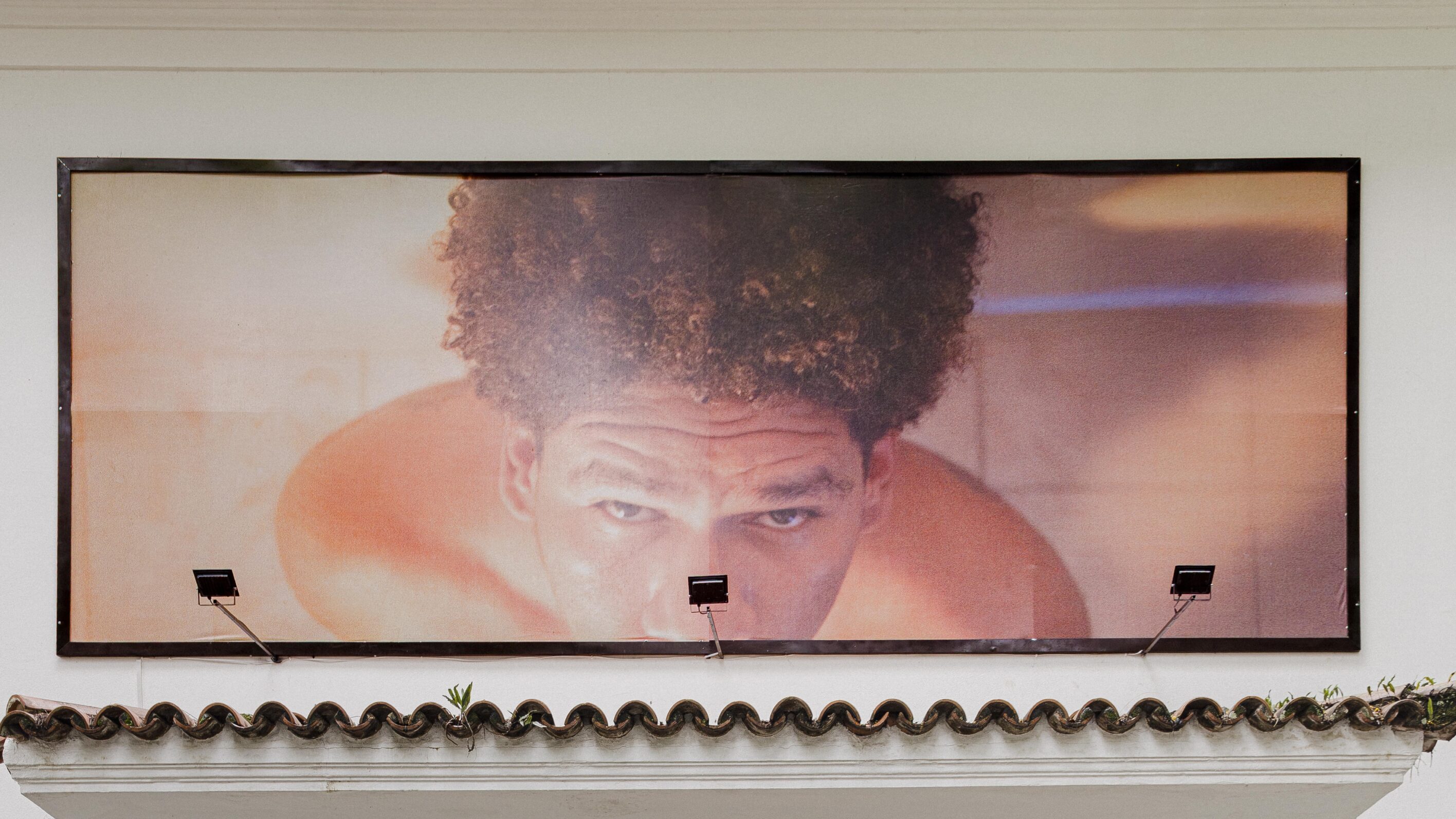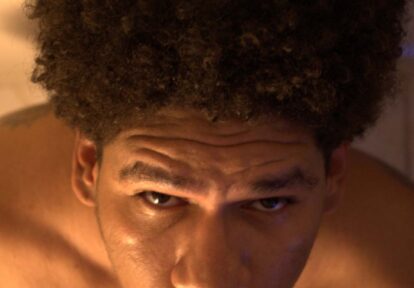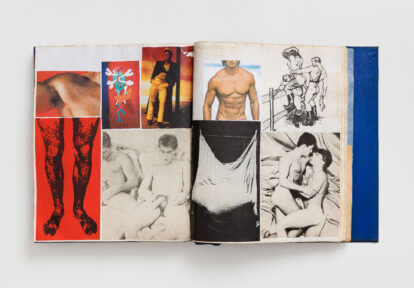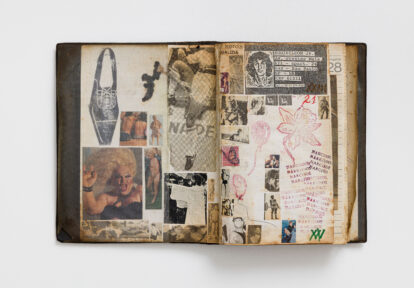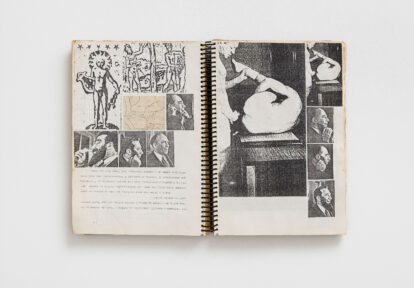A Plan of Extrapolation or Negative Desire
Jota Mombaça
An abyssal eroticism insinuates itself through the unconscious geography of this world. Landscapes of terror and lust, a kind of porn beneath the rubble, and the fierce promise of a
desire whose production is negative — a desire that interrupts established ways of seeing and being seen, of fucking and being fucked, of being and ceasing to be, of speaking and thinking. Here, what matters is not the whole but the fragment; not the voice but the cut. There is no context for balance, only choreographies of excess and lack, new and old blood, a negative outpouring of desire through the hot night. Since 2013, perhaps it’s fair to say that things have changed. I’m not one to suggest grand narratives, so I would resist the temptation to turn these intimate movements into expressions of macropolitics — every day we die, talk to ourselves and echo, run from the police, graffiti a colonizer’s statue, are reborn and born again, give up, hold on a little longer… And yet, it’s true that a broader field of revelation presses upon the smallness of our fate, upon our urge to scratch the surface of the real, to tear things apart with our own hands. Changing things is the fantasy that keeps our blood circulating, even when we’re surrounded by the reactive force of the usual police and the lords of triumphant history. When Hudinilson Jr. died, it was my turn to walk through hell. The first time I came into contact with his archives, many years after his passing, I was startled — because, despite our different paths and positions, there was a shadow in which our desires met. When I first opened one of his Reference Notebooks, I was overtaken by the urgency of that abyssal eroticism and felt compelled to throw my body into a single dive against the asphalt of the city that had consumed him — an urge to drink it all in, to swallow everything, to take my share of the pain and pleasure of all things. In the diagram of that will, there was an uncontrollable drive for reality itself, saturated all around us, to exhaust and disintegrate into a thousand and one possible and impossible reconfigurations through cuts and recuts. Some archives are made to wound grand memory, to drag grandiloquent narratives through the mud of the lived. My dive into Hudinilson Jr.’s Reference Notebooks convinced me that I
was facing such an archive — one whose intentions exceed those of a historical document, though it is undoubtedly anchored in a particular time, across the years the artist witnessed. This archive devotes itself to complicating prevailing versions and their hegemonic developments. Political and artistic events, magazine clippings, newspaper notes about everything and anything, layered over wallpaper samples and smeared with explicit desire… Among hard cocks and fragmented poems, the compositions do not form a portrait of an era but rather its extrapolation — at times violent. It is this extrapolation — what I call here “negative desire” — that this exhibition explores. Hudinilson Jr.’s work, especially the Reference Notebooks, now reaching a certain level of international recognition, is presented here as another plane of extrapolation. Created from — and against — the social position of a white, cis, gay, middle-class artist from São Paulo, obsessed with the cracks in the narcissistic mirror, Hudinilson Jr.’s works can only fully resonate when recontextualized through the echoes and dissonances that extend beyond his lifetime. The aim is not to weave a narrative of reverence or to trace a historiography that takes his work as a point of origin. Rather, it is to bring Hudinilson back to the street, to the transformative processes to which he was so attuned. The artists Bruna Kury and tetê are not presented here as the mere generational unfolding of Hudinilson’s compositional gestures, nor are they asked to engage with his work as a predecessor. I prefer to leave the straight lines of art history to the white hetero-cis-sexual fundamentalism to which all monoculture belongs. What we have here is relation, touch — sweat that mingles, fluids that move between bodies, poems unafraid of incompleteness and uninterested in the grand history of things. Um quebracabeça dentro de outros quebracabeças [A Puzzle Within Other Puzzles] (2025), a work by Bruna Kury commissioned for this exhibition, continues the artist’s series of “puzzles” through an erratic process of digital collage and the working-through of her own memory. Born in Rio de Janeiro and now based in Barcelona, Kury’s interdisciplinary and community-based artistic practice is marked by intense existential and geographic displacement. Her work intersects the struggle for sexual and gender rights with a deeply implicated awareness of the territorial tensions and conflicts associated with nationality, imperial violence, and structural racism. As an extrapolation of both the exhibition space and the territory it occupies, Kury’s gesture
is one of envelopment — as if, upon entering the room, we were swallowed by the puzzle and immediately absorbed into the replicating movement of its gestures. As negative desire,
Kury’s work imposes a pause on the heterosexual nation, on white geography, and on cisgender speciesism. There is much to see here, in the weave of this reversal. Much. There
is a productivity and a consistency proper to refusal, to contestation, to the performance of turning the game against itself — of multiplying puzzles within the puzzle. This productivity — or counter-productivity — of negative desire is what unsettles the place of queer, gender-dissident, and sexually deviant experience in the world as we know it. Where the figurations of the Policed Normal demand the neutralization of the deviant, negative desire bursts forth like lightning — rejecting both the reproduction of colonized
gender-sexual norms and the unmaking of deviation itself. Negative desire wants to deviate. It wants to produce the curve; to affirm doubt; to participate by withdrawing; to contribute by sabotaging; to expand what has been reduced and to reduce the expansiveness of the body- politic empire.
In bote (por uma noite apenas ou até que a morte nos separe) [strike (for one night only or until death do us part) (2025), tetê’s portrait is cropped just below the nose. With the mouth
out of frame, the strike feels total — it’s impossible to tell exactly what is being seized, and it could be anything. The work takes the form of a billboard mounted on the gallery façade, in constant dialogue with the street. This connection to the outside does not strip the photograph of its intimacy, which conceals more than it reveals, despite the blown-out light and monumental scale. More than what we see, the work compels us to consider what tetê sees. Why those wet eyes? How can such vulnerability cut through — tear the surface open? As negative desire, tetê’s work is a self-portrait that fails to constitute self-representation. Out of reverence for the unrepresentable, it portrays the irrepresentability of what lies beyond the frame. It is a work that makes one want to open the mouth — for what, one doesn’t quite know. It isn’t polysemic because it says many things, but because it wagers on meanings that may not yet be ready to be said. It holds a profusion of potentialities for the mouth, freeing this organ from its captive place in the body and in history; and it turns the artist’s gaze into a plane of extrapolation, a bridge reaching beyond and against the image. It is in this space — this outside that is not Rua da Jamaica, not even the city of São Paulo, but the geography of a poem entirely devoted to the counter-productive consistency of this desire for what has no name, this hunger to see the world end, and be remade, and end again — that this exhibition takes form. Like a small gap through which the possible and the impossible leak, the incalculable mathematics of desire and the gravity that pulls the body toward the earth. The conversation between tetê, Bruna Kury, and Hudinilson Jr. thus forms a shifting terrain full of meetings and misalignments, giving body to a manifestation that renounces history in favor of the erotic — inviting us to flirt with this desire that is both abyss and bridge.
ARTISTS
Bruna Kury
Hudinilson Jr.
tetê

